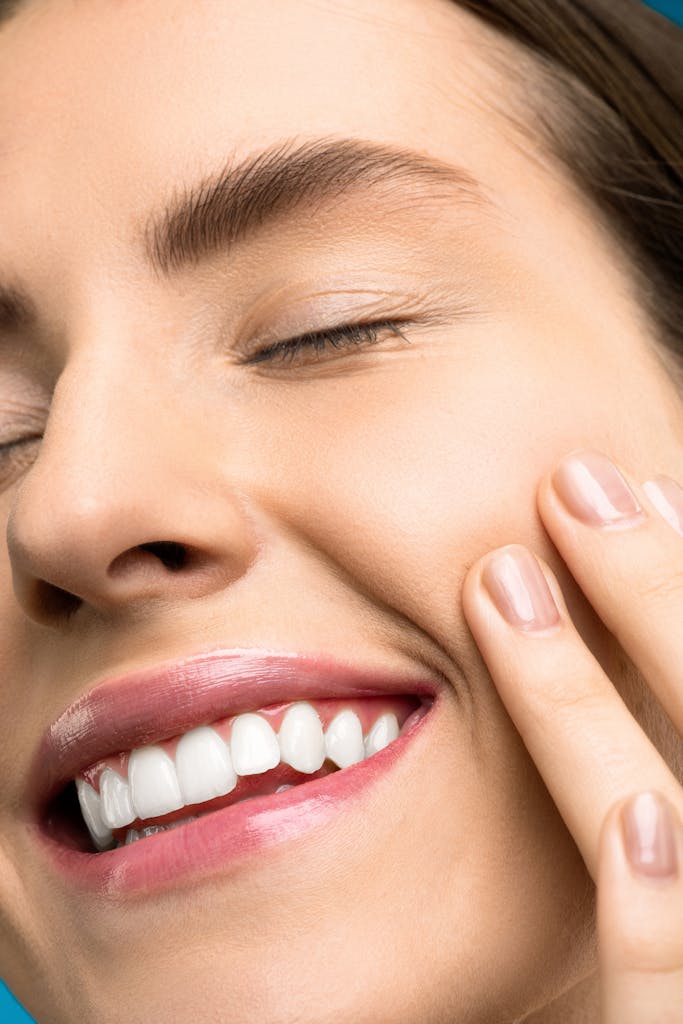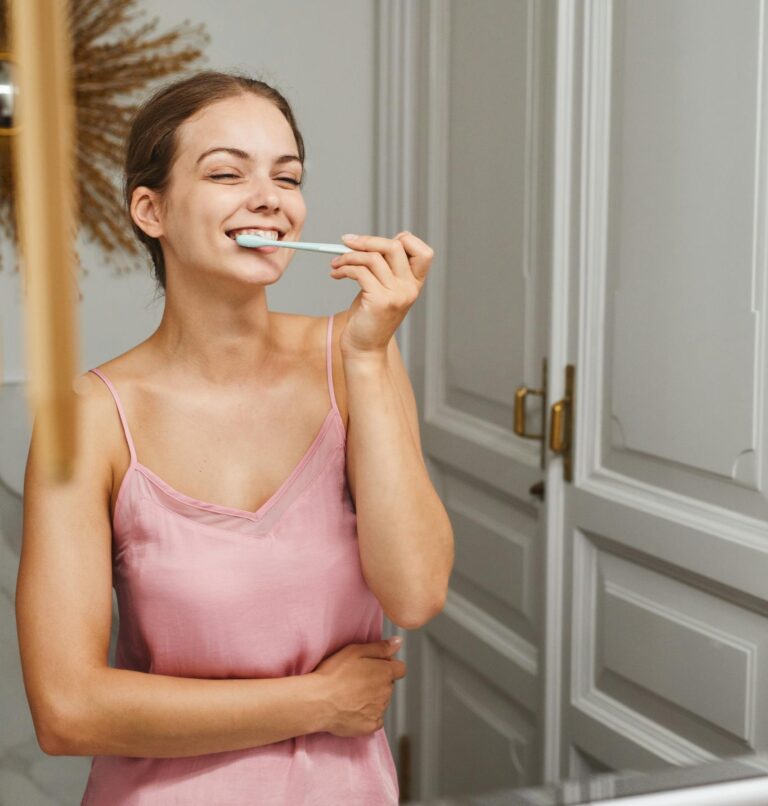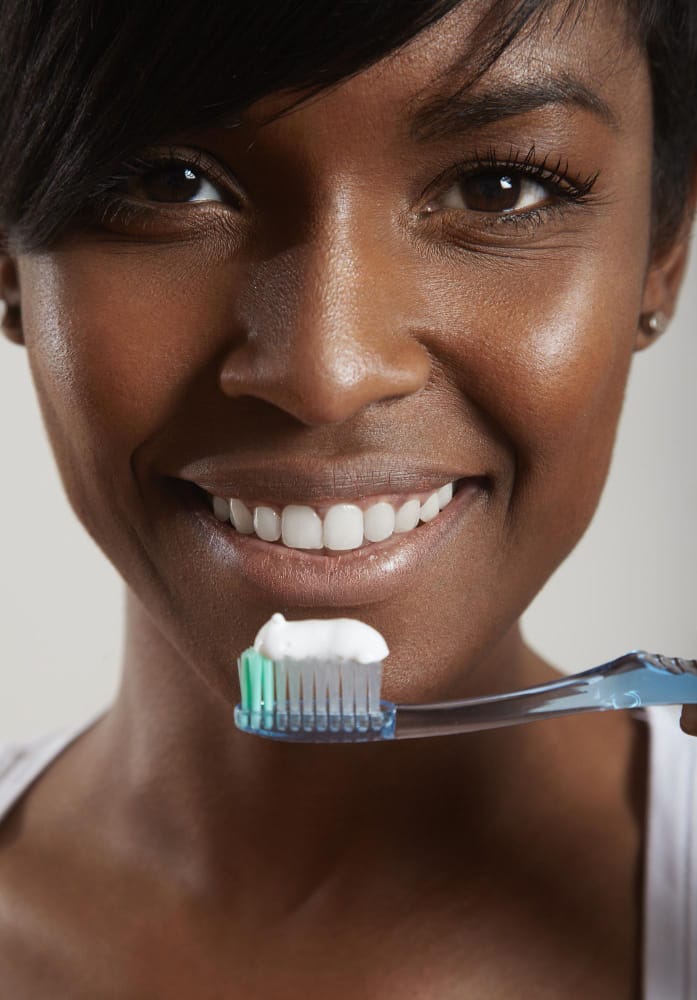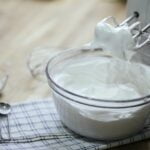FREE SHIPPING OVER $50
I Avoided the Dentist & Got a Celebrity Smile Using These Peroxide-Free Whitening Strips
Let’s be honest: going to the dentist for professional teeth whitening isn’t cheap—or comfortable. I’ve always wanted a whiter smile, but the idea of harsh bleaching chemicals, sensitivity, and a $600+ price tag kept me away. So I looked for an alternative that would work at home, without the pain.
After a ton of trial and error, I stumbled on peroxide-free whitening strips. And here’s the crazy part: they actually worked. Not only did I avoid the dentist, but after just a few weeks, my smile looked straight-up celebrity-level. No sensitivity, no fake-looking shades, and no chemicals that left my mouth burning.

What Are Peroxide-Free Whitening Strips?
Peroxide-free whitening strips are exactly what they sound like—teeth whitening products that skip the use of hydrogen peroxide or carbamide peroxide, the main bleaching agents in most whitening systems.
Instead, they rely on gentler alternatives like:
- PAP (Phthalimidoperoxycaproic Acid) – a non-invasive bleaching agent that removes stains without affecting enamel.
- Baking soda (sodium bicarbonate) – mildly abrasive and helps neutralize plaque acids.
- Activated charcoal – absorbs surface stains, though results can vary.
- Natural ingredients like coconut oil, aloe vera, or essential oils.
What sets them apart is that they whiten teeth without stripping enamel or causing pain, which is especially appealing if you have sensitive teeth or gums.
Why I Ditched Traditional Whitening Treatments
Like most people, I tried the “classic” options first—drugstore whitening strips with peroxide, whitening pens, even a take-home tray from the dentist. Here’s why I gave them up:
- Tooth sensitivity: After one round of peroxide strips, I couldn’t even drink cold water without wincing.
- Gum irritation: The peroxide burned my gums like crazy, leaving red patches for days.
- Unnatural results: My teeth ended up looking blue-ish white and uneven, especially near the gumline.
- Cost: Professional whitening was out of budget, and OTC options never quite delivered the promised brightness.
That’s when I started researching peroxide-free options—and stumbled across newer strips that use PAP technology instead.
The Whitening Strips That Changed the Game
The brand I landed on used PAP as the active ingredient and claimed zero sensitivity. At first, I was skeptical. But the reviews were glowing, and the before-and-after photos looked real—not retouched.
What won me over:
- Safe for enamel and dental work (like veneers and caps)
- Clinically tested and free from parabens, PEGs, and sulfates
- Noticeable results within 7–14 days
- No need to avoid wine, coffee, or acidic foods
- Tasteless, non-slippery strips that stayed in place
I figured I had nothing to lose and gave them a shot.
How I Used the Strips for Best Results
Consistency is key, but so is technique. I followed this simple routine:
- Brushed with a gentle toothpaste before application (no fluoride or peroxide).
- Dried my teeth with a towel before applying the strips (helps them stick better).
- Applied the strips for 30 minutes, once a day, usually before bed.
- Avoided eating or drinking for at least 30 minutes afterward.
- Used a remineralizing gel twice a week to boost enamel strength.
By day 5, I noticed a subtle brightness. By day 10, people were complimenting my smile. And by day 14, even I couldn’t deny the transformation—it looked like I had been to the dentist.
What Makes PAP Whitening So Effective?
The magic behind PAP (Phthalimidoperoxycaproic Acid) lies in its ability to oxidize stains on the tooth surface without penetrating the enamel like peroxide does.
Here’s why dentists are starting to pay attention:
- Targets intrinsic and extrinsic stains without causing microdamage
- No free radicals, which means it’s far less inflammatory
- Safe for long-term use, even daily, without weakening teeth
- Gentler on soft tissue—no gum burning or sensitivity
Multiple studies have shown that PAP can be just as effective as peroxide, especially for people who have darker staining from coffee, tea, or red wine—but without the uncomfortable side effects.
Who Should Try Peroxide-Free Whitening?
These strips are ideal if you:
- Have sensitive teeth or gums
- Wear braces, retainers, or veneers
- Drink coffee, tea, wine, or smoke
- Want to whiten gradually without dramatic bleaching
- Are looking for a clean, non-toxic oral care routine
They’re also great for maintenance if you’ve already whitened your teeth professionally and want to keep that glow without damaging touch-ups.
Are There Any Downsides?
While peroxide-free whitening strips worked wonders for me, there are a few things to keep in mind:
- Slower results: Don’t expect instant Hollywood shine. It’s a gradual process—think two weeks, not two days.
- Not as strong for severe staining: If your teeth are heavily discolored, you may still need a dentist-supervised treatment to get started.
- Not all brands are equal: Some peroxide-free products use gimmicky ingredients like charcoal or coconut oil that lack real clinical backing. Look for PAP-based formulas for the best results.
Final Thoughts
I didn’t expect to love peroxide-free whitening strips. I thought they’d be another overhyped wellness product. But now? I’m a total convert.
I got a whiter, more natural-looking smile in just two weeks—without tooth pain, gum burn, or dentist bills. Plus, the ease of doing it at home on my schedule made the experience stress-free and sustainable.
If you’re tired of peroxide or just want a gentle, effective way to brighten your teeth, give peroxide-free whitening strips a shot. You might be surprised how far a pain-free smile can take you.
Related Articles
- Dentists Hate This: 8 Flossing Secrets They’ll Never Tell You (Number 5 Is Gross)
- Is Teeth Whitening Ruining Your Smile? The Truth You Need to Know
- Dentists Reveal: Is an Electric Toothbrush Really Better—Or Just Hype?
- I Asked 5 Cosmetic Dentists Which Toothpastes Work Best for Whitening—Did Yours Make the List?
- How Your Oral Health Changes as You Age and What to Do to Stay Healthy







